Engineering Quality Solutions
Upgrade your real estate app with tailored searches, SEO, high-quality visuals, and more. SolGuruz offers expertise in crafting seamless, user-friendly designs. Let’s make your vision a reality!
By Paresh Mayani
Last updated on: November 28, 2024

The world is on the web! It’s not only limited to photos, videos, and social media – but people come to the web or app to buy and sell the properties. Don’t you believe us?
In the 2023 NAR Home Buyers and Sellers Generational Trends report, 96% of buyers in all age groups searched the Internet for homes. That shows the current and upcoming trends of Real Estate Apps.
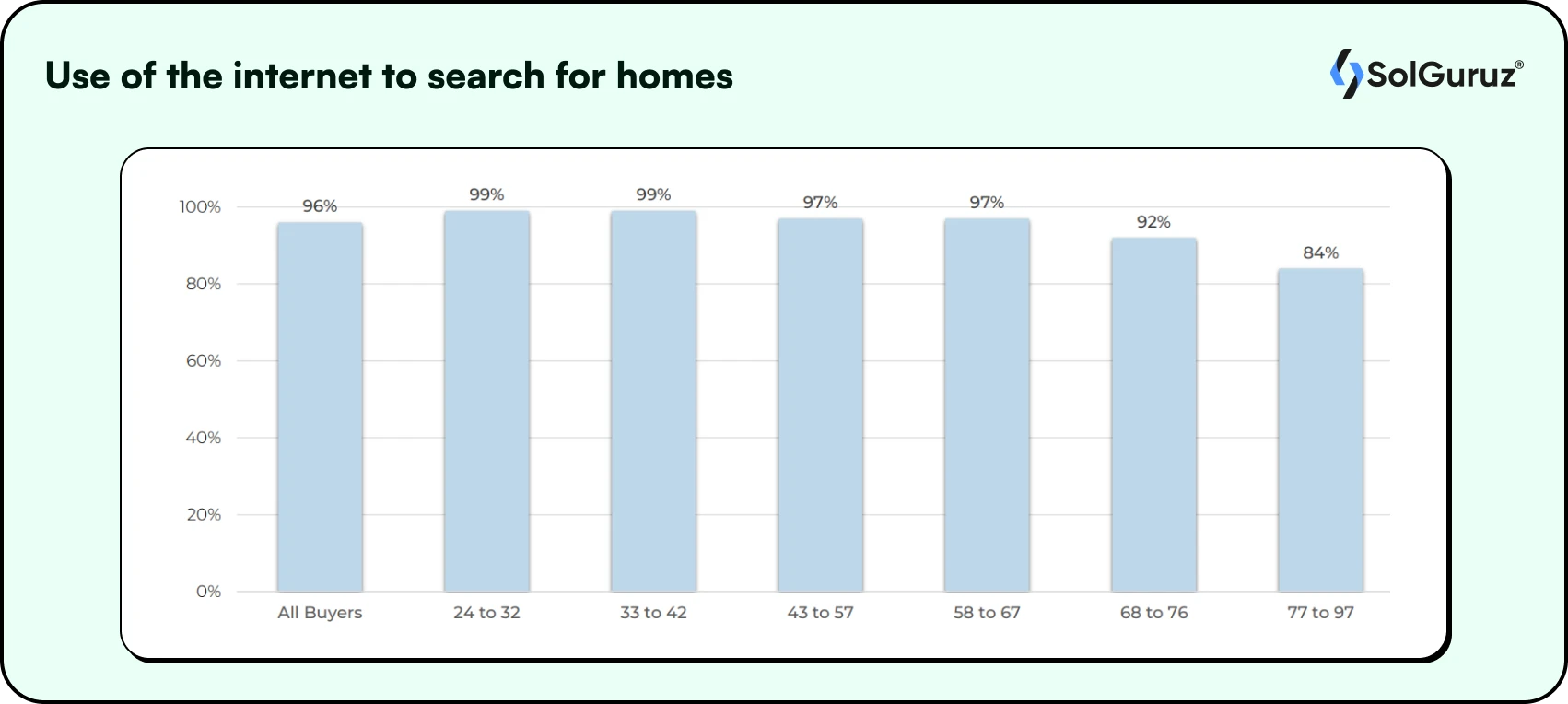
In today’s digital age, a well-crafted real estate app can be a game-changer for realtors and potential buyers. As a real estate app designer, your goal is to create an app that stands out and provides a seamless user experience.
But how do you do it?
Focusing on key design elements that make your app shine in the crowded real estate app market can help you achieve this.
This guide explores the vital aspects of real estate app design and how they can enhance realtor app store optimization solutions.
According to CRETI’s insights, the Center for Real Estate Technology & Innovation tells us that the prop-tech sector in 2023 has showcased a dynamic growth trajectory, reflecting the rapid integration of technology into the real estate market.
Data from the same source also indicates that investment in real estate technology rose in 2022. Over the first two quarters of 2022, investors put $13.1 billion into prop tech businesses, an increase of 5.6% from the previous year. These stats indirectly show the rise of Real estate mobile app development globally.
The visual appeal of a product is a significant factor in influencing consumer purchases. So, long before an open house, realtors should do all they can to make a good impression.
Your digital footprint must shine to attract potential buyers and convince interested vendors to work with you. Your website may catalyze fruitful online real estate partnerships with the right combination of characteristics. Use these design strategies in Real estate app development to create a website or application that stands out.
The use of mobile and technology has opened doors to unlimited options for users when it comes to buying and selling a new or old property. You cannot offer your customer a limited set of listings and choices.
If you still do, you may soon be out of the race compared to your competitors who are leveraging Real Estate App Development. In today’s era, real estate apps are seen as tools for businesses to crush the competition and be the market toppers with highly efficient realtor apps.
Well, if you are still looking for the answer to why real estate app development is a leading industry trend, Here are some key advantages that will make you believe:
Well, if you have done the right real estate app development as a business, then the app will be able to automate repetitive tasks like property information filling, document exchange, and even basic inquiries through chatbots. This frees up valuable time for agents and streamlines the process for buyers.
With the feature of In-app messaging systems, the real estate app allows instant communication, eliminating wait times and frustration for agents and clients.
Yes, the basic yet core advantage of getting into real estate app development is to have high sales. This can be done by adding the right and trending features, such as virtual tours, digital document signing, advanced search filters, etc.
We will see the five key design elements that are must during a real estate mobile app development in the next section, but 2023 NAR Home Buyers and Sellers Generational Trends reports tell that nearly 50% of buyers of all age groups “Looked online for properties for sale” as the FIRST STEP TAKEN DURING THE HOME BUYING PROCESS.
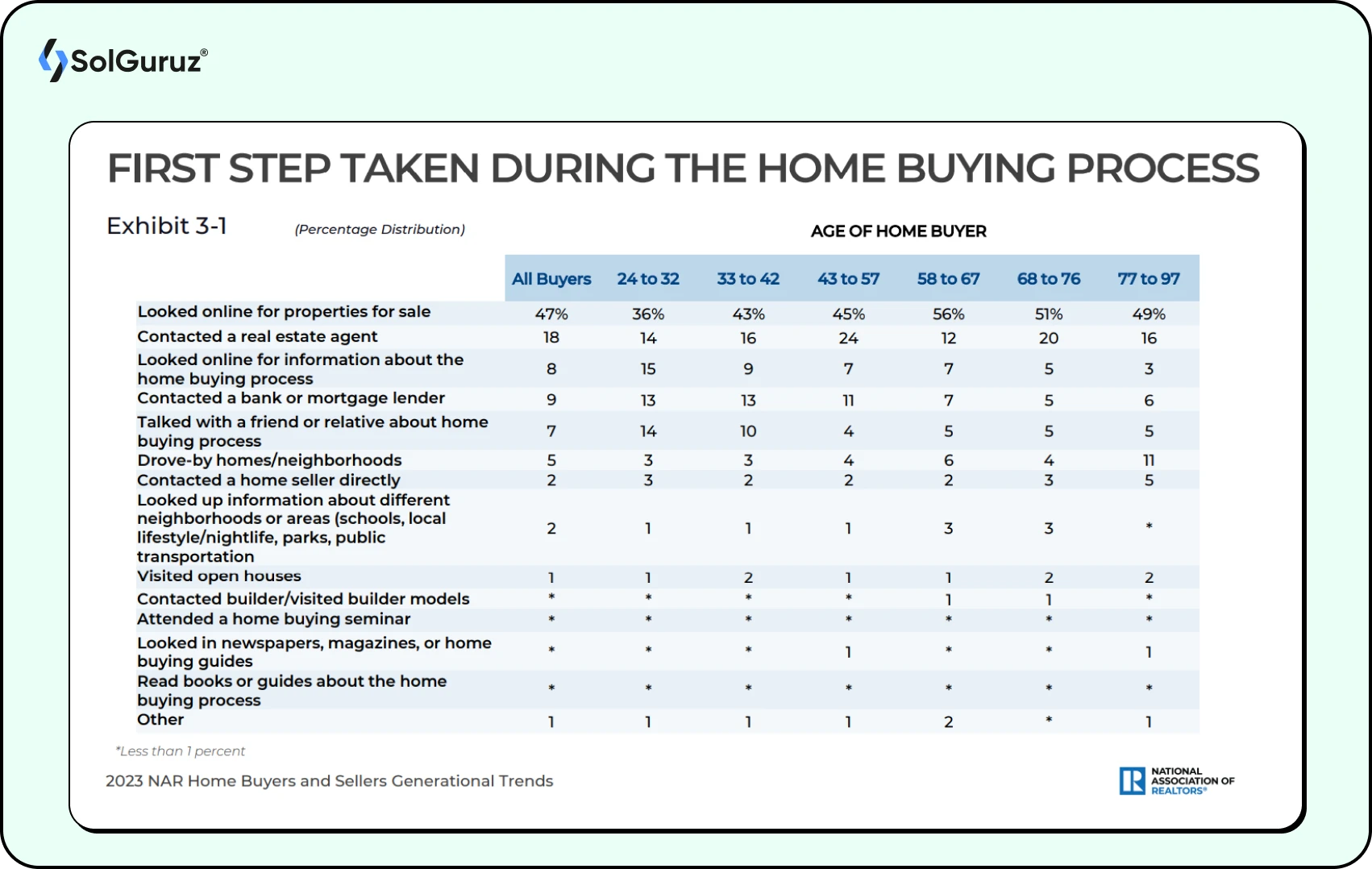
Real estate apps offer many features that keep buyers engaged and satisfied, from personalized search filters and saved listings to detailed local information and mortgage calculators.
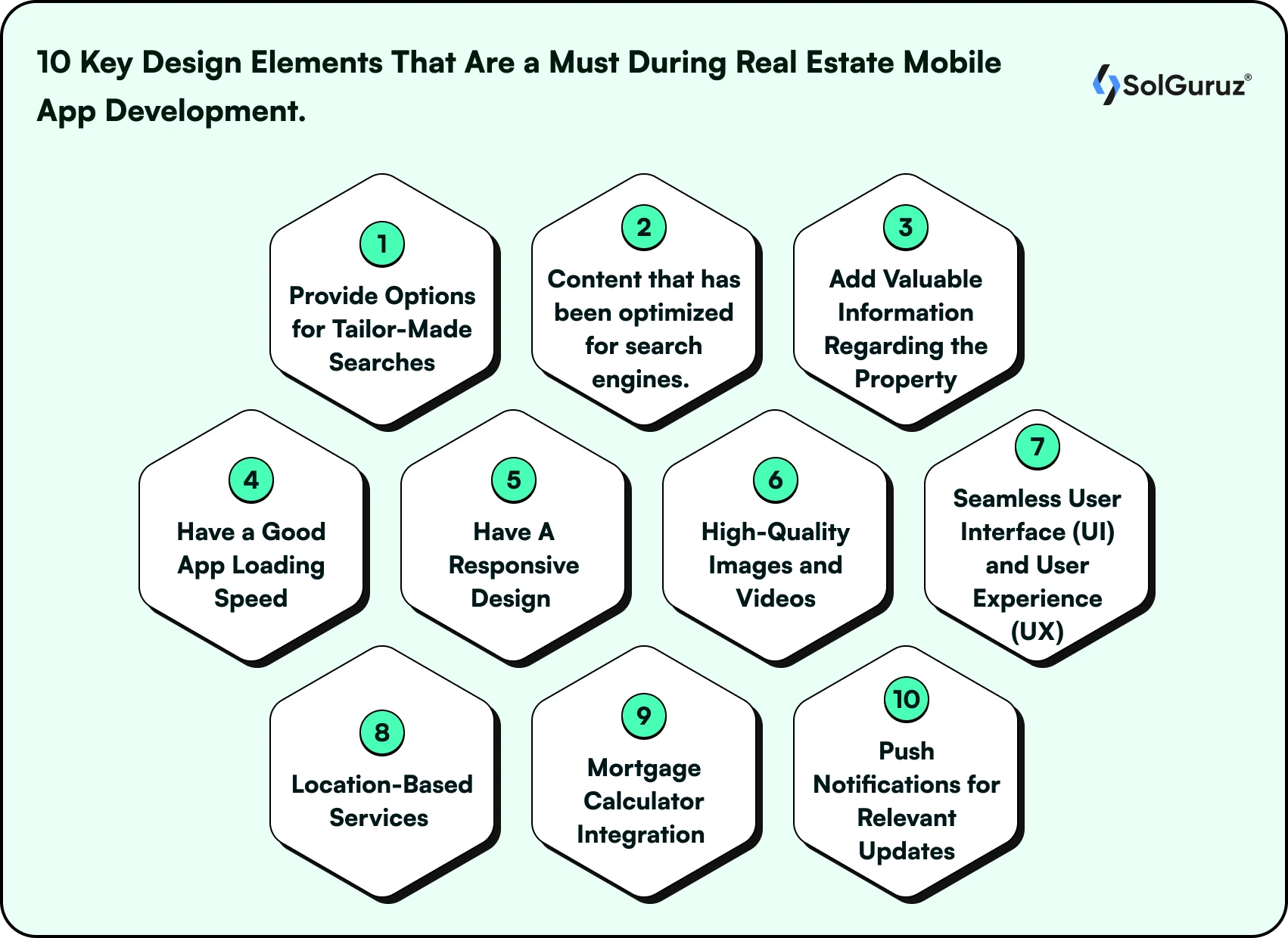
A real estate app’s main objective is to attract users and facilitate real estate transactions.
You don’t want your real estate app to be another option in the app stores that no one uses. Thus, it is crucial to stay up with current developments and features in the app industry and implement them.
In the following, we’ll review some of the fundamental and cutting-edge components your real estate app must have to go commercial.

Your real estate app will list many properties with ample photographs, videos, and other relevant information. Still, users don’t want to have to sift through hundreds of listings to discover the ones that are a good fit for them.
Your Real estate app development plan should include a search option that allows consumers to search by various criteria, including price range, location, number of bedrooms, and additional features like a swimming pool or media room.
By ensuring a significant amount of hyperlinking within pages that gives current website content, you and your business can take a leaf out of the playbook used by the most successful SEO services.
Users should only navigate away from your app’s content if they are in search of information that can’t be found on the page they are currently viewing. If you use just one characteristic of hyperlinking, you may make the whole customer experience hassle-free and smooth for your consumers.

Branding firms will tell you you can do everything right for your brand. Still, it will matter once you have the appropriate eyeballs viewing your app. Branding companies will tell you you can do everything perfectly for your brand, but everything will be fine.
This is where search engine optimization (SEO) comes into play in your Real estate mobile app development plan.
When potential clients and business associates search for your company on the internet, they typically start by using a search engine like Google or Bing. They could be inquiring about buying a property, selling a house, or finding an agent to assist them.
Search engines determine the results they show based on several criteria, most of which are derived from your website. Before making a choice, most individuals look at only the top two or three results.
Leads from the local community drive your company. Real estate agents that can get the most significant foot traffic often have the best success selling property. You may get more people to your real estate app if you optimize it for search engines.
Investing in search engine optimization for your app or website is a valuable service you can provide your users. They can’t hire your services if they can’t find you online.
Optimizing an app for search engines is fundamental to excellent Real estate app development.

You have first-hand knowledge that every single purchaser and vendor is one of a kind. People have a range of desires and preferences varying from one individual to another. Often, they are still determining their needs. Rely on you to help them find and obtain it at a price that fits their budget. Your role is crucial in optimizing the real estate app to guide them in finding the desired information, which should encompass all resources that could address the questions on their minds.
Your in-person services are supplemented by those available on your website/app. It should make it easier for them to search their alternatives, swiftly narrow down the relevant possibilities, and locate what they seek.
Listings with videos get 403% more views and inquiries than those without. Consider filming a property tour or a drone to show potential buyers what
What the land looks like. After the epidemic started, this service became very popular among those who wanted to update their websites and apps.
Thanks to technological advancements in virtual reality, people on one side of the globe who wish to buy a home or business on the other may now take a virtual tour of the property before committing to the purchase.
In 1981, homebuyers relied on classified advertisements in newspapers and recommendations from friends to find a house. Only a tiny percentage used real estate agents, and none ever considered looking online. In 2016, 90% of real estate companies had websites, and 44% of purchasers began their search for a home online.
The share of homebuyers who are millennials is growing. Of those millennials who purchased a property last year, 99% indicated they began their search online.
Whatever people seek is presented here.
While going for Real estate app development, ensure the photos in your listing are of excellent quality by highlighting the best angles and lighting. Offer a slideshow that potential buyers may flick through at their leisure to see different angles of the home and its perks without clicking on each photograph.
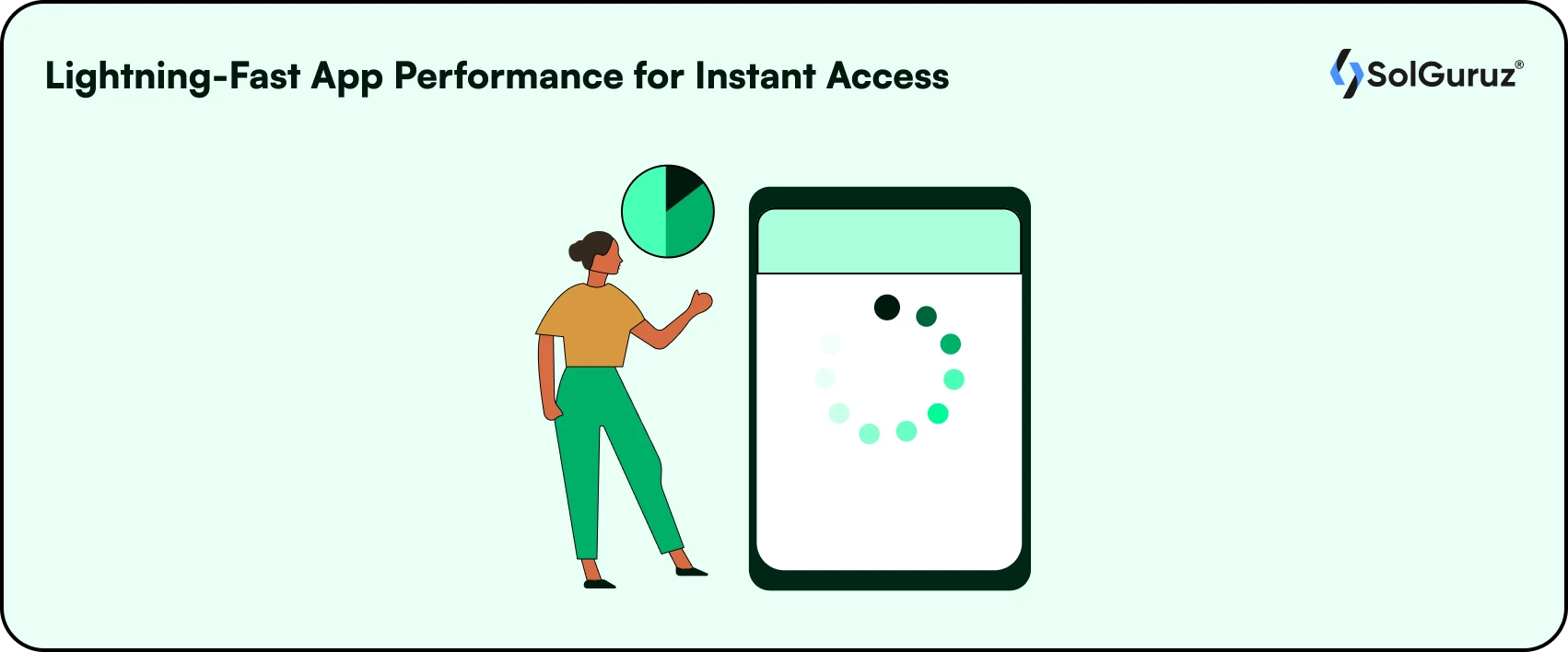
Additionally, it’s crucial to ensure your app loads lightning-fast. With consumers becoming increasingly impatient, the moment your app opens can make or break their impression of your brand. If your application is sluggish in loading, visitors may worry that using your other services will be equally frustrating and time-consuming.
Research shows that people expect websites and apps to load in less than two seconds, and if they don’t, users are likely to bounce away to competitors. To guarantee a seamless user experience and keep your visitors engaged, investing in top-notch real estate mobile app development services is essential. We at SolGuruz specialize in crafting apps that are not just perfect and smooth but also blazing fast, ensuring your users have a hassle-free experience from the get-go.

60% of Google searches are done on devices. Being at home on a desktop computer, people are often on the move or at work when looking for a home.
They can access your app’s functions if optimized for mobile consumption. If this isn’t the case, consumers will go elsewhere, and your real estate app will suffer in Google’s search results.
With responsive design, your app will appear great on any device. It saves time and money by eliminating the need to create separate desktop and mobile versions of your website. The initial setup and ongoing upkeep of several locations are more expensive. In Today’s competitive internet market, your company must pay attention to the need for a responsive design.
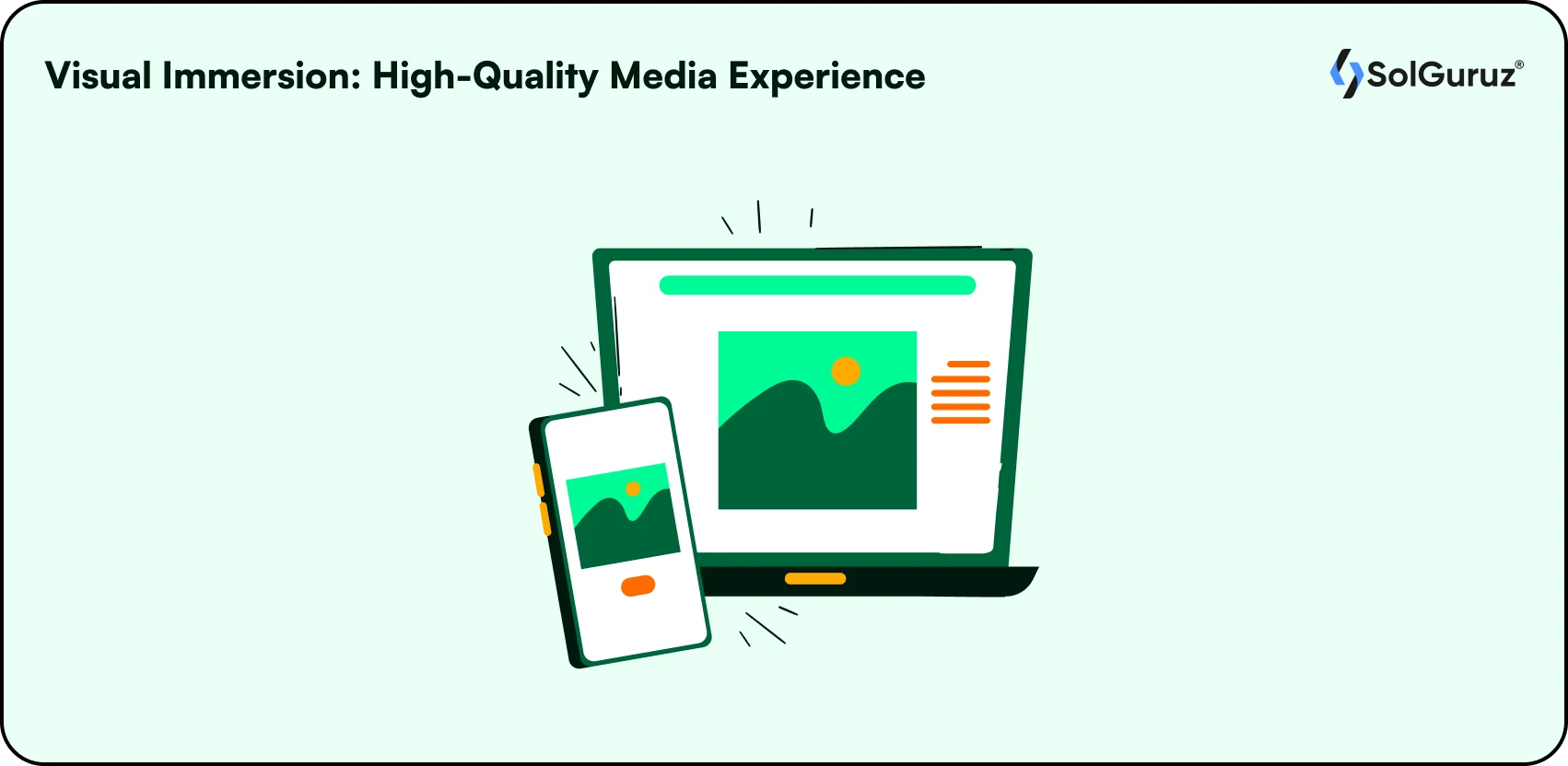
In the realm of estate, grabbing the attention of users is crucial. This is where top-notch visuals play a role. They serve as the impression for buyers, igniting curiosity and laying the groundwork for a more in-depth look at the property.
Professional Photography: Consider investing in high-quality photography that utilizes lighting, angles, and composition to accentuate the property’s features. Sharp and vivid pictures can display living spaces, kept kitchens, and welcoming outdoor areas.
Multiple Angles and Rooms: Make sure to include plenty of photos that capture each room from angles, highlighting features such as fireplaces, walk-in closets, and unique architectural elements.
Staged for Success: Collaborate with a home stylist to craft a welcoming vibe in the pictures. Thoughtful arrangement of furniture, decorations, and tidying up can greatly assist viewers in picturing themselves residing in the area.
Immersive Virtual Tours: Explore from Anywhere
Introduce tours to enhance user interaction. These engaging activities enable purchasers to navigate the premises, experience the layout firsthand, and delve into every corner and crevice while lounging on their sofa.
360° Panoramas: Use advanced 360-degree technology to craft captivating views that provide a look at every room. This enables individuals to navigate leisurely, moving the view around and adjusting angles to observe all the details.
Dollhouse View: Offer a representation of the property, offering users a top-down view of the layout and arrangement. This can be especially useful for picturing the space and grasping how rooms are interconnected.
Highlight Key Features: Incorporate spots into the tour to highlight important features or facilities. Users can access pictures, videos, or detailed explanations for an immersive experience by clicking on these spots.
High-quality visuals are an investment, not an expense. They can significantly increase user engagement, generate more leads, and ultimately accelerate sales.
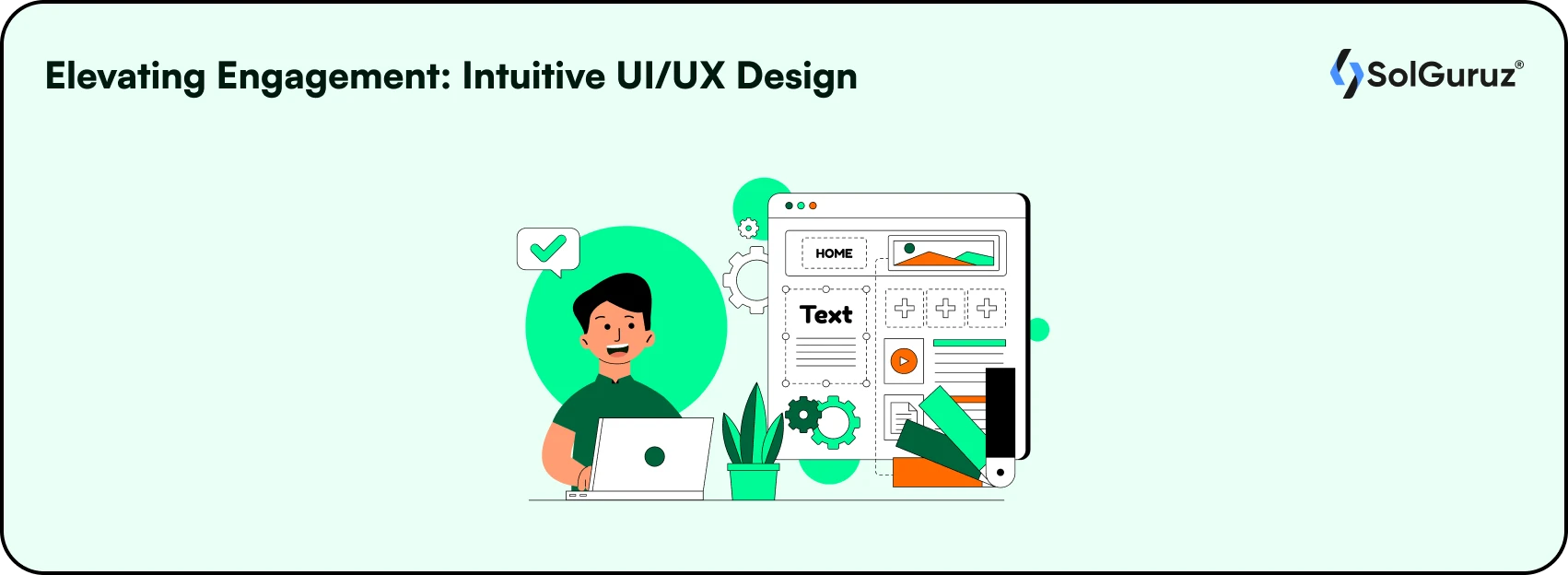
A successful real estate app relies heavily on having an easy-to-use interface (UI). The UI is a connection point between your app’s features and its users, and a designed interface can result in annoyance. Missed opportunities for engagement.
To guarantee that your app delivers a user experience (UX), follow these steps to create a designed UI:
Simple Navigation: Imagine your real estate app as a well-organized home. Make sure users can easily find what they’re looking for without any confusion. Keep the number of clicks to access features to a minimum and maintain a navigation bar or menu system across the app.
Clear Labeling: Avoid using symbols or complex terms. Ensure that the names for buttons, menus, and functions are straightforward, brief, and easily understandable. Opt for language that resonates with your intended audience, steering clear of real estate terminology that could puzzle individuals into the buying process.
Logical Layout: Arrange the data in a manner that seems effortless and automatic. Cluster comparable. Highlight accessed features prominently on the primary display. A visual structure, with separations, between segments assists users in scanning the application and pinpointing their desired content.
Search Functionality: A strong search feature is a must for every real estate application. Users should be able to look for properties based on location, price range, property type (such as a condo, apartment or single-family home) and other relevant factors. The search options should be simple to customize and tweak, enabling users to streamline their choices.
Visually Appealing Design: Functionality is important, but aesthetics also play a role. A sleek and contemporary appearance, along with visuals, helps make an initial impact and maintain user interest. Stick to a color palette. Avoid overwhelming users with excessive clutter.

In an era dominated by technology, the significance of location cannot be overstated. By incorporating map features into your real estate application, you provide users with a tool to browse properties and gain insights into the environment. It’s more than identifying spots—it involves painting a comprehensive picture of the community and lifestyle associated with a property.
Seamless Search by Location: This feature enables individuals to make the most of location-based services. It allows them to explore properties using their GPS location or by manually inputting an area. This tailored method assists users in finding properties that align with their requirements and preferences.
Interactive Maps: Use maps that offer a complete perspective of the nearby surroundings. Users should be able to zoom in and out, check out street views, and smoothly move around neighborhoods.
Highlight Nearby Amenities: Let’s do more than just display the features; let’s bring out their possibilities! Incorporate points of interest (POIs) onto the map, spotlighting attractions that enhance the property. These may consist of schools, parks, eateries, malls, fitness centers, public transit choices, and additional amenities.
Customizable Filters: Users can customize their search results by focusing on the distance to facilities. For instance, families may prefer homes near quality schools and parks, whereas young adults may prioritize proximity to cafes and vibrant social scenes.

Buying a home can feel overwhelming with all the financial aspects and uncertainties involved. One major challenge for buyers is grasping the concept of affordability. This is where integrating a mortgage calculator into your real estate app can make a difference.
Estimate Monthly Payments: Empower users by enabling them to calculate their estimated mortgage payments in the app. This feature enables them to promptly assess affordability by considering factors such as property price, down payment amount, and desired loan term.
Customizable Inputs: The mortgage tool needs to be flexible, giving users the option to change factors. This involves being able to enter the property cost down payment percentage, loan duration (e.g., 15 years or 30 years), and approximate interest rate.
Real-Time Calculations: When users change the input values, the calculator should instantly show them the estimated payment amount. This immediate response lets users try out scenarios and discover their payment options.
Transparency and Education: Make sure you don’t just show numbers—give them some context! It could be helpful to include a description of terms such as interest rate and loan term. This way, users can better understand concepts and make informed choices.
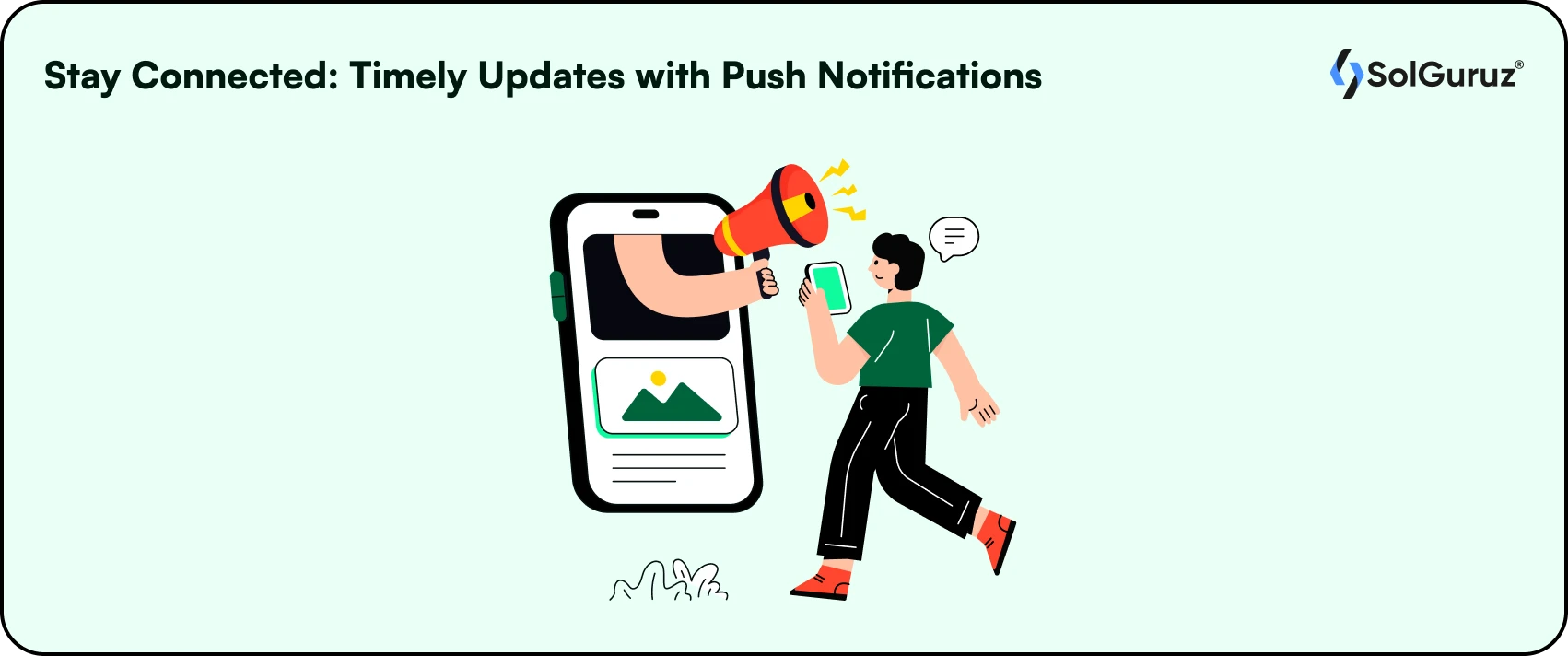
In today’s world filled with an abundance of information, it is vital to grab and hold users’ attention. Push notifications, if employed thoughtfully, can serve as an asset in maintaining user engagement with your real estate application.
The critical factor here is customization – overwhelming users with notifications will ultimately result in annoyance and the app’s removal. Here is a guide on utilizing push notifications:
Relevance is King: Avoid sending notifications. Instead, use the information from users’ saved searches, browsing history, and preferences to send messages. For instance, if a user shows interest in single-family homes in a neighborhood, notify them about listings in that area instead of price reductions on studio apartments downtown.
Timely Updates: Keep users informed with relevant updates. Notify them promptly about listed properties that meet their preferences or inform them of any price adjustments on the properties they have bookmarked.
Open House Reminders: Assist individuals in staying organized by sending notifications to remind them about open houses for properties they have expressed interest in. This could greatly boost attendance numbers and enhance the generation of leads.
Urgency and Scarcity: Consider using a sense of urgency or scarcity to catch users’ attention. For instance, sending a notification regarding a time-limited price drop or a final opportunity for a house can motivate users to engage. By integrating these design elements, you can develop an estate mobile application that is both practical and offers an excellent user experience, drawing in and keeping users in the current competitive market landscape.
When you’re knee-deep in crafting your real-estate mobile app, don’t overlook the goldmine of information hiding in plain sight: your site visitors. These potential leads are like treasures waiting to be discovered.
Just imagine your visitors spending quality time browsing your listings and soaking up your content. But here’s the kicker – if you can’t reach out to them, they might slip through the cracks and never return. That’s where capturing their contact info comes into play. Offer them something special in exchange for their details – think insider tips or exclusive sneak peeks.
But wait, there’s more! To keep visitors coming back for more, you’ve got to make your app irresistible. That means dazzling them with eye-catching graphics, making them search options so flexible they feel like floating on air, integrating the latest AI and ML options, and making sure your layout is as comfy on the phone as on a computer screen.
And let’s not forget about content—be bold, unique, and you. Build a reputation in the real estate world that’s as solid as a brick house. When homebuyers in your area need a realtor, they know exactly who to turn to—you, the most qualified and resourceful one around.
So, what are you waiting for? Let’s turn those real estate app dreams into reality! Reach out to us today, and we can discuss how we can make your vision come to life. We’re just a call away, ready to help you make waves in the real estate world. Let’s make it happen! Read about the impressive journey and success of one of our real estate clients.
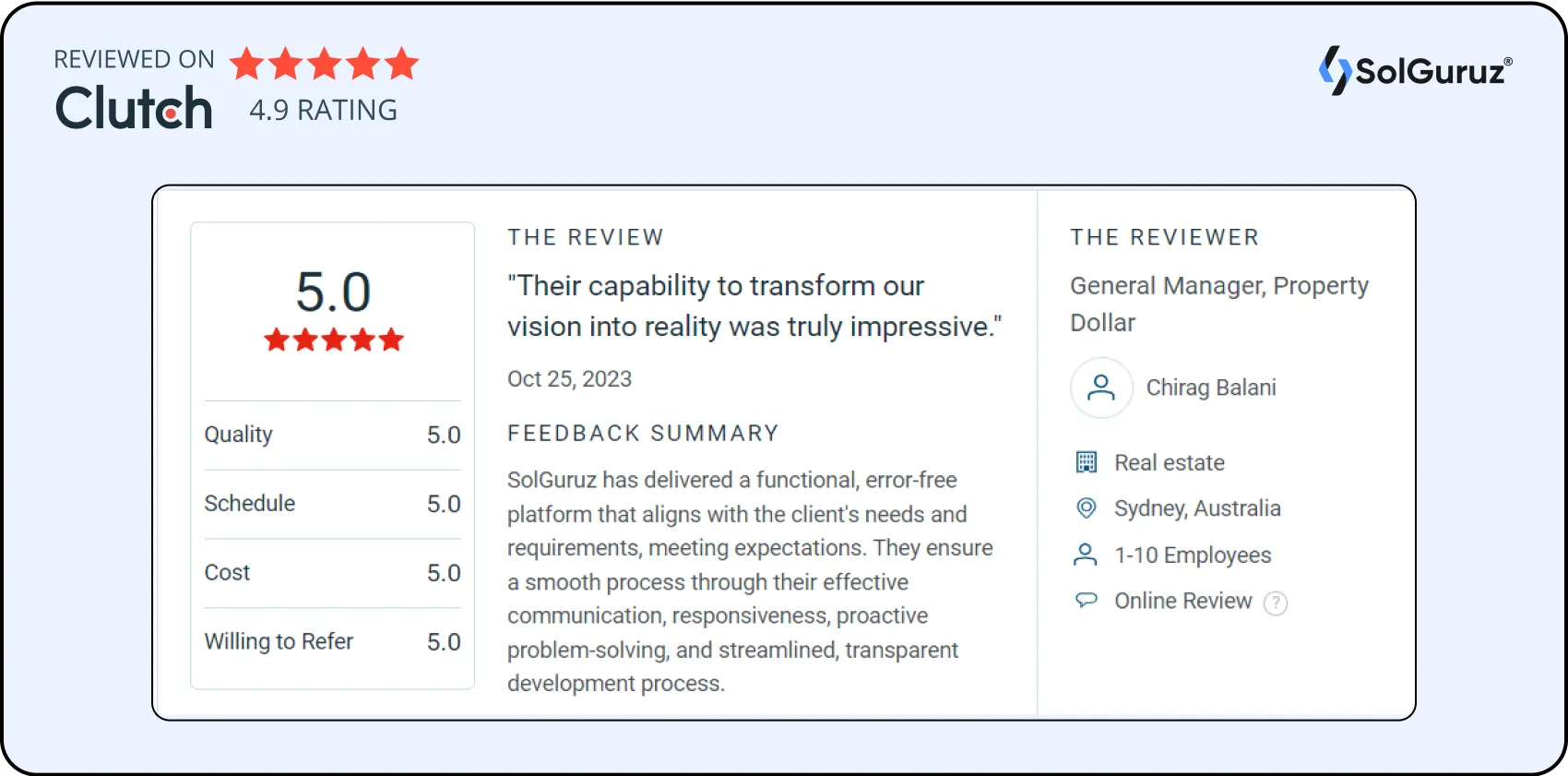
A real estate app’s main objective is to attract users and facilitate the buying and selling of real estate.
Here are some key features a real estate app must have. User Registration Property Information Photos and Videos Neighborhood facilities Virtual Tour Map Location, etc.
A Real Estate Application can offer Monthly Fees, Premium Subscription, Selling advertisements, Collaboration, etc. are significant ways to earn money.
Written by
Paresh is a Co-Founder and CEO at SolGuruz, who has been exploring the software industry's horizon for over 15 years. With extensive experience in mobile, Web and Backend technologies, he has excelled in working closely with startups and enterprises. His expertise in understanding tech has helped businesses achieve excellence over the long run. He believes in giving back to the society, and with that he has founded a community chapter called "Google Developers Group Ahmedabad", he has organised 100+ events and have delivered 150+ tech talks across the world, he has been recognized as one of the top 10 highest reputation points holders for the Android tag on Stack Overflow. At SolGuruz, we believe in delivering a combination of technology and management. Our commitment to quality engineering is unwavering, and we never want to waste your time or ours. So when you work with us, you can rest assured that we will deliver on our promises, no matter what.
Elevate your real estate app with essential design elements that drive user engagement and satisfaction. SolGuruz specializes in integrating these critical features to enhance functionality and aesthetics.

Strict NDA

Flexible Engagement Models

1 Week Risk Free Trial
Give us a call now!

+1 (646) 703 7626
Sign up for our free newsletter

Don’t Just Dream Big - Let’s Make It Happen!
For over a decade, I’ve been at the forefront of turning bold, ambitious ideas into groundbreaking solutions. As the CEO of SolGuruz, I’ve had the privilege of helping startups and businesses not only tackle their biggest challenges but scale to new heights with products that don’t just compete - they dominate.
Every meeting with me isn’t just a conversation; it’s a launchpad for revolutionary ideas that can catapult into great products/services. Leaders who’ve taken the step to connect with me have walked away with actionable strategies that made their products unforgettable.
👉 Book a free strategy call with me now and experience the difference. This isn’t just advice - it’s the spark you need to ignite your next big breakthrough.
In a world full of ordinary, let’s create the AI-extraordinary.
Your moment is now - don’t let it pass by.
Paresh Mayani
CEO, SolGuruz
paresh@solguruz.us